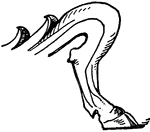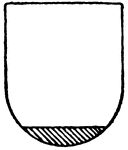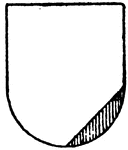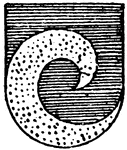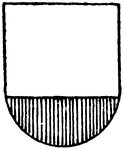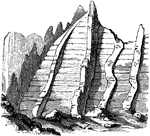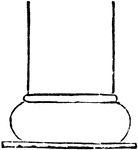
Base of a Column in a Bas-Relief from Kuyunjik
Some reliefs portray small façades of temples with capitals. This figure brings out prominently…

Pillar on a Lion's Back
In the fragment of a relief from Kuyunjik columns occur which rest on a cushion-shaped base on a lion's…
Restored Capital from the Ruins of Persepolis
Other capitals are more compact, where from the lower part, which is in the shape of a globular vessel,…

Capital from the Ruins of Persepolis
Other capitals are more compact, where from the lower part, which is in the shape of a globular vessel,…
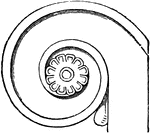
Volute of the Persian Column
Other capitals are more compact, where from the lower part, which is in the shape of a globular vessel,…
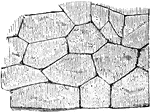
Cyclopean Masonry
Remains of the circular walls round towns and palaces, which are known under the name Cyclopean, exist…
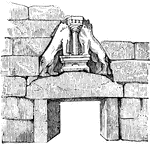
The Lion Gate at Mycenæ
Remains of the circular walls round towns and palaces, which are known under the name Cyclopean, exist…

Section of the Treasury of Atreus
Peculiar vaulted buildings often existed in connection with the palaces for the preservation of valuables;…
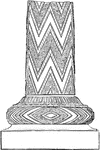
Pillar Fragment from the Treasury of Atreus
Peculiar vaulted buildings often existed in connection with the palaces for the preservation of valuables;…

Doric Column from the Temple of Neptune at Paestum
The Doric columns, which are short, powerful, and closely ranged together, in order to support the weight…
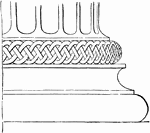
Attic Base in the Temple of Minerva Polias
The so-called Attic base is the form which most frequently occurs; and consists of two tori separated…
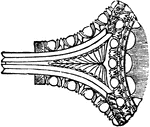
Plan of Ionic Antæ Capital from the Temple of Minerva Polias at Athens
The capital of the antæ and pilasters is without volutes, as is seen here. The shaft has no flutings;…
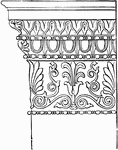
Ionic Antæ Capital from the Temple of Minerva Polias at Athens
The capital of the antæ and pilasters is without volutes, as is seen here. The shaft has no flutings;…
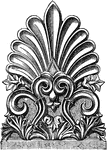
Ante-fixae
Ante-fixae, the vertical blocks which terminate the covering tiles of the roof of a Roman, Etruscan,…
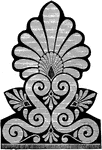
Ante-fixae
Ante-fixae (from Latin antefigere, to fasten before), the vertical blocks which terminate the covering…

Double Twist on an Astragal
An astragal is molding profile composed of a half round surface surrounded by two flat planes (fillets).…
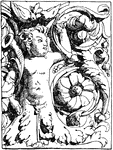
Half-Figure Socle of Altar
The Half-figure Socle of Altar is the base platform design of the altar. It is a design of two half-figure…
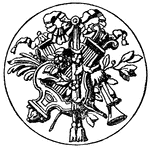
Medallion Base Symbol
The medallion base symbol is a symbol of a lyre. Designed by sculptor Lehr of Berlin, Germany which…

Roman Base
This Roman base is a design found in the Capitalone museum of Rome, Italy. It is a design of leaves…

Roman Base
This Roman base is found in the Temple of Concord in Rome, Italy. It is a natural method of decoration,…
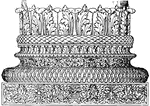
Roman Base
This Roman base is found in the Baptistery of Constantinople, Rome, Italy. It is a natural method of…

Antique Candelabrum Base
The Antique candelabrum base is made out of bronze. It is divided into three legs that are stretched…
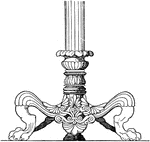
Antique Candelabrum Base
The Antique candelabrum base is made out of bronze. It is a design that is divided into three legs that…

Antique Candelabrum Base
The Antique candelabrum base is made out of bronze. It is a design that is divided into three legs that…

Antique Candelabrum Base
The Antique candelabrum base is made out of bronze. It is a design that is divided into three legs that…
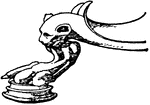
Leg of Candelabrum Base
This leg of candelabrum base is an antique design that is found in Paestum, Italy. In this design the…
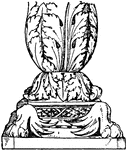
Roman Candelabrum Base
The Roman candelabrum base is encircled with leaves and lion's claws as feet.
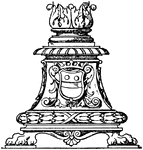
Renaissance Candelabrum Base
The Renaissance Candelabrum base is a design that comes from a collection of drawings found in the Uffizi…
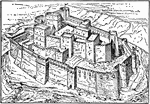
Krak des Chevaliers
Krak des Chevaliers was the headquarters of the Knights Hospitaller during the Crusades. It was expanded…
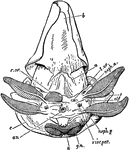
Female Nautilus without Shell
An illustration of the postero-ventral view female nautilus without the shell. "a, Muscular band passing…
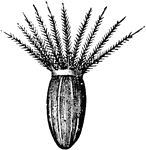
Valerian Seed with Pappus
An illustration of the valerian seed with attached pappus. In a composite flower, Pappus is the part…

Shadows of Two Cylinders
"Two cylinders, one horizontal, the other perpendicular. The base of the horizontal cylinder is at one…
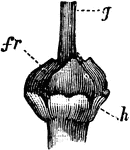
Gynaeceum of Viper's Bugloss
An illustration of the Gynaeceum of the viper's bugloss. Fr, ovary; g, base of style; h, honeyglands.
!["The Metre Bridge is employed - a piece of apparatus which is illustrated [here]. It consists of a wooden base, upon the upper face of which is mounted a metallic rectangle; three sides of this rectangle are formed by a broad substantial copper band - having a negligible resistance - and the fourth consists of a platinum silver wire w w joining the copper blocks P and p. This wire is exactly one meter long, and over it slides a key K, which when depressed makes contact by means of a platinum knife-edge with the wire; the exact point on the wire at which this contact is made is indicated by an arrow-head on the key, which slides against a scale, as shown." (Britannica, 1891)](https://etc.usf.edu/clipart/61300/61365/61365_metre-bridge_mth.gif)
Metre Bridge
"The Metre Bridge is employed - a piece of apparatus which is illustrated [here]. It consists of a wooden…
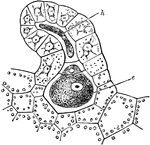
Archegonium of Bracken
An illustration of the archegonium of bracken. An archegonium (pl: archegonia), is a multicellular structure…
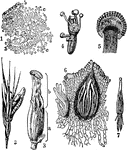
Ergot
"1. Cross-section of the ovary (sphacelia), in the early stage of the fungus, showing the mycelium (a…

Pulley Blocks
An illustration of a block pulley. A pulley (also called a block) is a mechanism composed of a wheel…
Pulley Blocks
An illustration of a block pulley. A pulley (also called a block) is a mechanism composed of a wheel…
Pulley Blocks
An illustration of a block pulley. A pulley (also called a block) is a mechanism composed of a wheel…
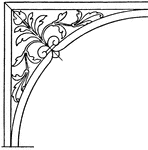
Renaissance Spanrail Panel
The Renaissance spanrail panel is a plinth (base) of a column. It is found in the St. Anthony cathedral…

Cuttlebone
Cuttlefish "bone" or internal shell. The fine point at the base structure represents the guard of the…

Frustum Of A Rectangular Pyramid With Hole
Illustration of a frustum of a pyramid having a rectangular base and a hole passing through the center…
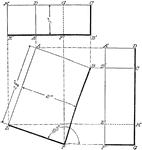
Projection Of Rectangular Prism
Illustration of the projection of a rectangular prism whose base makes an angle of 160° with the…
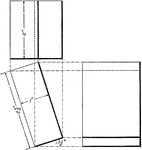
Projection Of Rectangular Prism
Illustration of the projection of a rectangular prism whose base makes an angle of 17.5° with the…
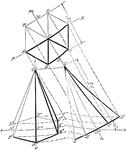
Projection Of Hexagonal Prism
Illustration of the projection of a hexagonal prism whose axis is parallel to the plane of the paper…
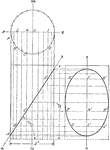
Plane Intersecting A Cylinder
Illustration of a cylinder cut by a plane making an angle of 57° with the base.

Conic Section Ellipse
Illustration of a cone cut by a plane that is not parallel to the base and does not intersect the base.

"The Badenoch" Floor Plans
The entrance to this house is labeled a vestibule, to elicit a sense of grandeur. The round tower can…

Fiddle-Shaped Leaf
A leaf which has "the form of a fiddle or violin; pandurate or panduriform: applied in botany to an…

Transgressive-Regressive-Transgressive Series
Diagram showing the relationships of a transgressive-regressive-transgressive series. A hiatus is found…

Block Faulting, Sandia Mountains
The mass consists of crystalline rocks, shown by dots, covered by limestones and other sediments, which…

Block Faulting Results
Diagram showing mountains and valleys due to block faulting in the background, and the dissection of…

American Falls, Niagara
Section of the American Falls, Niagara. In front of the falls lie the larger blocks of Lockport dolomite,…
